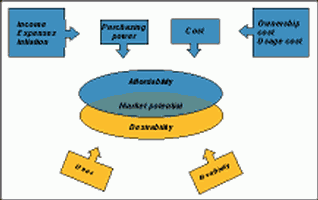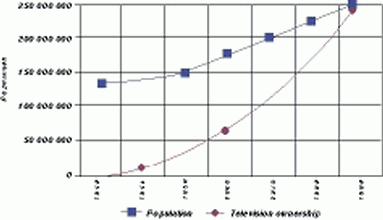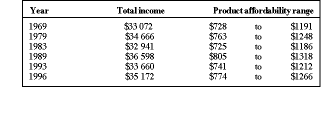
With a compound annual growth rate of over 29% from 1990 to 2000 the PLD industry is one of the fastest growing segments of the IC industry.
According to the Semiconductor Industry Association (SIA), the programmable logic market is forecasted to grow by 42,9% in 2000 to $4,1bn. To place this in perspective, in 1990, PLD shipments of $416m represented roughly 5% of all logic devices sold. In the year 2000, PLDs will account for more than 14% of all logic devices sold. This tremendous market expansion only further reinforces the growing acceptance and viability of PLDs as a system design standard. Fuelling this explosive growth are several industries whose success was in part enabled by the PLD industry.
Time-to-market advantages
Winning companies have succeeded by getting their products to market before their competition. They meet their customers' needs quickly and therefore establish a market position that is very difficult to challenge; this position also gives them a market advantage for subsequent generations of products. This so-called 'time-to-market' paradigm is the watchword for many entrepreneurial companies.
Reducing their time-to-market remains a key focus for competitive companies. This focus is growing in complexity because of virtual manufacturing and because system designers are increasing their collaboration with suppliers and customers - the steps required for prototyping, design change, quality testing and change execution are being further compressed. Programmable logic has proven itself a very effective solution for dealing with these challenges by helping companies deliver products to market as fast as possible.
Time-to-volume advantages
Winning companies must not only develop new products quickly (time-to-market), they must also be able to manufacture the product and quickly ramp production to meet customers' demands. This is called 'time-to-volume'. Component supply through electronics distributors and flexible contract manufacturing are factors that have enabled companies to respond to soaring customer demand. Furthermore, PLDs have been a major factor in providing an off-the-shelf platform for not only prototyping and early production, but also manufacturing through the entire product life cycle.
As standard, off-the-shelf products, PLDs can be produced inexpensively, in high volumes; there is no delay for production ramp up as is often the case with ASICs which often require a long lead time and added risk. We maintain that time-to-volume is a more critical concern than time-to-market for electronic equipment designers and manufacturers today.
Designing with standard, off-the-shelf programmable logic devices gives you the key advantage of flexibility, allowing you to immediately address market demands for high volume production; programmable logic has been proven effective for all applications, not just low volume systems and prototyping.
Affordability meets desirability
Many factors affect whether a product is viewed by the marketplace as being both desirable and affordable. Figure 1 illustrates market potential, which is the junction representing those consumers who desire and can afford a given product.
Consumers must balance the purchasing power of their income with the cost of a given product. Purchasing power is affected by a broad spectrum of factors. For example, consumers' income levels, other expenses, and inflation play a large part in determining purchase power. At the same time, they must rationalise the cost of ownership of a product (maintenance, and so on) and any ongoing usage costs. Therefore, a product must offer a high level of utility through features and performance. The combination of product appeal and practicality equates to market size.

A tale of two products
Let us illustrate how the manufacturing model and, consequently, the drive for time-to-volume has changed over the years by contrasting TVs with DVDs (digital video disk players). Television entered the US market in 1936 with very little market impact, because there was little content and also little disposable income with which to buy the TV sets. By 1945 there were probably less than ten thousand TV sets in use, yet that number was destined to grow enormously as post-war incomes rose and broadcast networks were able to supply the content that drove demand. By 1950, the number of TV sets in consumers' hands had grown significantly to six million sets, and then to 60 million by 1960. In 1998, according to the Consumer Electronics Manufacturing Association (CEMA), penetration of colour televisions reached 98% of US households. Figure 2 presents television penetration over time.

Contrasting the acceptance and penetration of television to that of DVD player market illustrates why time-to-volume has become a fundamental market force for designers and system manufacturers. The DVD market was in an ideal market position at its inception. The content (movies) was already available and the market requirement for high-quality movies to be played on big-screen TVs and home theatre systems had already developed. Moreover, the cost to purchase a DVD player and the DVD disks was low compared to when TVs were initially introduced to the market. The result was explosive growth in product demand. Industry prognosticators forecast that the US consumers would purchase 10 million DVD players in 2000. This represents an increase in market penetration from 4 to 12% in 12 months.
Customer demand has driven this growth of advanced products. TVs were interesting and unique, yet with the lack of disposable income there was not a significant demand for televisions until the 1950s. For consumer products, the affordability threshold is attained when the end equipment price falls between 1,1 and 1,8 weeks of household income. Table 1 presents US median household income and corresponding price points for consumer goods acceptance.

Industrial markets
The concepts of market potential apply to nonconsumer, industrial equipment as well. For example, Internet-based corporations of all sizes must respond to their customers' needs for more bandwidth. Both internal customers for intranet support and external customers demanding faster, more seamless Internet interfaces are demanding greater performance. The result is that companies are demanding ever-increasing performance and more features from their network system suppliers. Those network suppliers, in turn, have to respond with faster, better, cheaper products in much shorter time than ever before. The stakes are colossal, because if a network company cannot service its customers, then some other supplier will step in and take its place as the market leader.
Conclusion
Programmable logic will continue to outpace other electronic component market segment because there is no faster or better way to develop and manufacture your products; this applies to cellular phones, basestations, electronic test equipment, medical devices, telephone switching systems and a vast array of consumer and industrial products. In the year 2000, PLD will account for more than 14% of all logic devices sold.
Programmable logic has proven itself a very effective solution for dealing with the challenges of delivering product to market on a timely basis.

© Technews Publishing (Pty) Ltd | All Rights Reserved